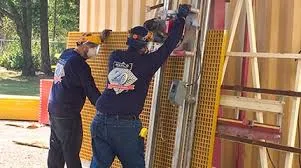
-
 Afrikaans
Afrikaans -
 Albanian
Albanian -
 Amharic
Amharic -
 Arabic
Arabic -
 Armenian
Armenian -
 Azerbaijani
Azerbaijani -
 Basque
Basque -
 Belarusian
Belarusian -
 Bengali
Bengali -
 Bosnian
Bosnian -
 Bulgarian
Bulgarian -
 Catalan
Catalan -
 Cebuano
Cebuano -
 China
China -
 China (Taiwan)
China (Taiwan) -
 Corsican
Corsican -
 Croatian
Croatian -
 Czech
Czech -
 Danish
Danish -
 Dutch
Dutch -
 English
English -
 Esperanto
Esperanto -
 Estonian
Estonian -
 Finnish
Finnish -
 French
French -
 Frisian
Frisian -
 Galician
Galician -
 Georgian
Georgian -
 German
German -
 Greek
Greek -
 Gujarati
Gujarati -
 Haitian Creole
Haitian Creole -
 hausa
hausa -
 hawaiian
hawaiian -
 Hebrew
Hebrew -
 Hindi
Hindi -
 Miao
Miao -
 Hungarian
Hungarian -
 Icelandic
Icelandic -
 igbo
igbo -
 Indonesian
Indonesian -
 irish
irish -
 Italian
Italian -
 Japanese
Japanese -
 Javanese
Javanese -
 Kannada
Kannada -
 kazakh
kazakh -
 Khmer
Khmer -
 Rwandese
Rwandese -
 Korean
Korean -
 Kurdish
Kurdish -
 Kyrgyz
Kyrgyz -
 Lao
Lao -
 Latin
Latin -
 Latvian
Latvian -
 Lithuanian
Lithuanian -
 Luxembourgish
Luxembourgish -
 Macedonian
Macedonian -
 Malgashi
Malgashi -
 Malay
Malay -
 Malayalam
Malayalam -
 Maltese
Maltese -
 Maori
Maori -
 Marathi
Marathi -
 Mongolian
Mongolian -
 Myanmar
Myanmar -
 Nepali
Nepali -
 Norwegian
Norwegian -
 Norwegian
Norwegian -
 Occitan
Occitan -
 Pashto
Pashto -
 Persian
Persian -
 Polish
Polish -
 Portuguese
Portuguese -
 Punjabi
Punjabi -
 Romanian
Romanian -
 Russian
Russian -
 Samoan
Samoan -
 Scottish Gaelic
Scottish Gaelic -
 Serbian
Serbian -
 Sesotho
Sesotho -
 Shona
Shona -
 Sindhi
Sindhi -
 Sinhala
Sinhala -
 Slovak
Slovak -
 Slovenian
Slovenian -
 Somali
Somali -
 Spanish
Spanish -
 Sundanese
Sundanese -
 Swahili
Swahili -
 Swedish
Swedish -
 Tagalog
Tagalog -
 Tajik
Tajik -
 Tamil
Tamil -
 Tatar
Tatar -
 Telugu
Telugu -
 Thai
Thai -
 Turkish
Turkish -
 Turkmen
Turkmen -
 Ukrainian
Ukrainian -
 Urdu
Urdu -
 Uighur
Uighur -
 Uzbek
Uzbek -
 Vietnamese
Vietnamese -
 Welsh
Welsh -
 Bantu
Bantu -
 Yiddish
Yiddish -
 Yoruba
Yoruba -
 Zulu
Zulu
flue gas desulfurization
Flue gas desulfurization (FGD) is a critical technology employed to reduce sulfur dioxide (SO2) emissions from power plants and other industrial processes that burn fossil fuels. As global concerns about air pollution and its impact on public health and the environment continue to rise, FGD systems have become essential components in the pursuit of cleaner air.
The primary purpose of FGD is to remove SO2 from flue gases before they are released into the atmosphere. Sulfur dioxide is a significant contributor to acid rain, which can damage ecosystems, harm aquatic life, and affect human health. FGD technologies help mitigate these issues and comply with stringent environmental regulations.
There are various methods of flue gas desulfurization, but the two most widely used technologies are wet and dry scrubbing. Wet scrubbing involves the use of a liquid solution, typically a lime or limestone slurry, that absorbs SO2 from the flue gas. This process results in the formation of gypsum, a useful byproduct that can be used in construction materials such as drywall. Wet scrubbing systems are highly effective in achieving high removal efficiencies, often exceeding 90%.
On the other hand, dry scrubbing technologies utilize dry absorbent materials, such as calcium carbonate or magnesium-based compounds, to capture SO2 from flue gases. This method has the advantage of lower water usage and reduced wastewater management issues, making it an attractive option for facilities where water resources are limited.
flue gas desulfurization

Despite their effectiveness, FGD systems can be expensive to install and maintain. However, many power plants are investing in these technologies as the cost of non-compliance with environmental regulations and potential penalties is often far greater than the operational costs of installing an FGD system.
In addition to reducing air pollution, FGD plays a vital role in the overall strategy for achieving sustainable development. By decreasing SO2 emissions, FGD systems contribute to improved air quality and public health, fostering a cleaner environment for future generations.
In conclusion, flue gas desulfurization is a vital technology for controlling sulfur dioxide emissions in industrial operations. With the ongoing commitment to reducing air pollution and promoting environmental sustainability, FGD systems will continue to evolve and play a significant role in the future of energy production and industrial processes. As advancements in technology lead to more efficient and cost-effective solutions, FGD will remain an integral part of our environmental management strategies.
Latest news
-
Exploring the Benefits of Top Hammer Drifter Rods for Enhanced Drilling PerformanceNewsJun.10,2025
-
High-Precision Fiberglass Winding Machine for GRP/FRP Pipe Production – Reliable & Efficient SolutionsNewsJun.10,2025
-
FRP Pipes & Fittings for Shipbuilding - Corrosion-Resistant & LightweightNewsJun.09,2025
-
Premium FRP Flooring Solutions Durable & Slip-ResistantNewsJun.09,2025
-
Premium Fiberglass Rectangular Tanks Durable & Lightweight SolutionNewsJun.09,2025
-
Tapered Drill String Design Guide Durable Performance & UsesNewsJun.09,2025









